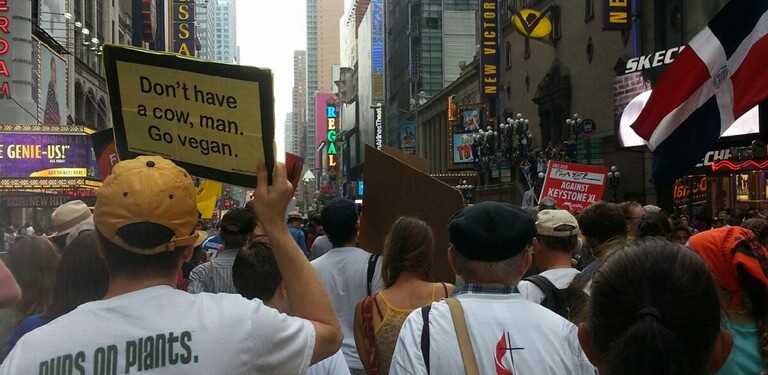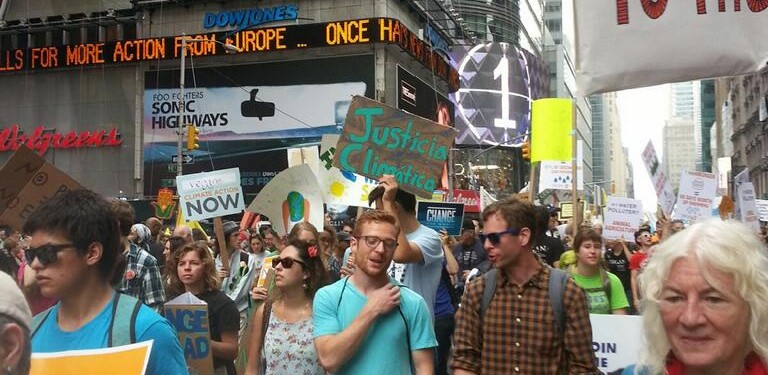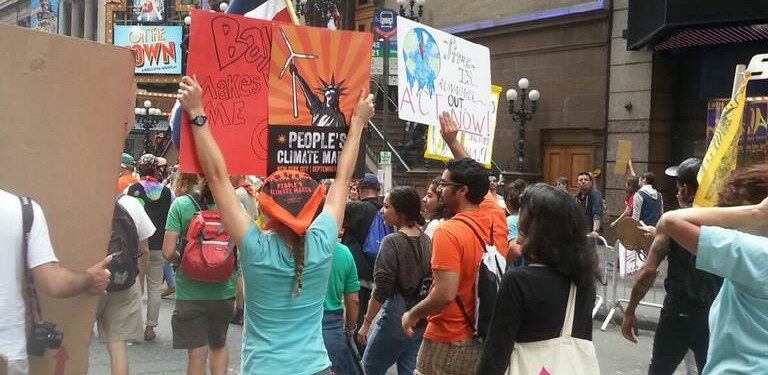Several George Mason University students took part in the People’s Climate March, the largest climate change protest in history.
Over 400,000 people gathered together in New York City to incite significant action from world leaders attending a United Nations climate summit in the city. Voices came not only from New York but from around the world. According to the march’s website, 2,646 similar events took place in 162 countries.
“Any social justice movement in general is really trying to magnify people’s voices because essentially, in a democracy, that’s what it should be anyway,” said Samantha Parsons, a member of the GMU Environmental Action Group who helped organize the group of Mason students at the event. “[The government] tends to focus more on corporate money and corporate voices than the peoples’.”
The protesters congregated to express frustration with past United States government and United Nations responses to climate change. Signs such as “One Earth, One Chance” and “There Is No Plan(et) B” expressed the need for government action and the urgency of the situation. Elaborate floats, loud chants and drumming also emphasized the message. Other messages spread hope such as “I believe that we will win!”
“I thought that was short, sweet and to the point,” said Suman Mukopahyay, an environmental studies student who attended the march. “It’s like we’re here to express our belief, or hope. We believe word’s going to get through.”
In addition to individual marchers, participants organized themselves into various blocks, each representing a different group of people. Virginia college students marched together, as did farmers, vegans and victims of climate disasters such as Hurricane Sandy.
Despite the diversity of origin, the march website says that participants were there to ultimately solve the climate crisis.
“It was really inspiring to see that many people motivated to launch change in there world,” Mukopahyay said.
However, Parsons says that the march alone will not solve the climate crisis.
“Nothing is really going to come of it if we don’t come back to our local areas,” Parsons said. “Once everyone works on the local issues it creates a domino effect, and essentially it becomes a national, international vision and goal.”
Mukhopadhyay was optimistic of the march’s impact, but agreed continued effort is necessary for change.
“Rome wasn’t built in a day,” Mukhopadhyay said. “It’s a steady process of making your voices heard.”
Photo Credit: Ellen Glickman







